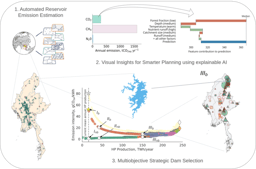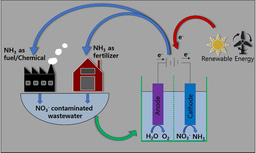
When people think about the biggest open problems in physics, they usually imagine the largest scales, like the universe, or the tiniest ones, like quantum mechanics or particle physics. However, there is another major problem, less well-known and less discussed, yet just as important. It is something we encounter every single day. This problem is turbulence.
Whenever a fluid, such as air or water, moves, it rarely flows smoothly. It swirls, mixes, and twists in a messy, chaotic way. You can see it in the currents of a river, in the wind bending a field of wheat that Van Gogh painted so beautifully, or in the smoke rising from a barbecue. The air around cars, ships, and planes is turbulent, and this turbulence is the main source of drag. The air inside engines is turbulent as well, and even the motion of insects’ wings is turbulent. In engineering, almost every flow is turbulent except for lubrication flows. Even when you stir sugar into your coffee au lait, it is turbulence that makes everything mix evenly.
The problem is that turbulence remains largely unexplained. The Navier-Stokes equations, written down in the mid-1800s, describe all fluid motion. Solving them analytically is so difficult that proving whether solutions always exist is a Clay Millennium Prize Problem worth one million dollars. And even with the best supercomputers in the world, solving these equations exactly for a practical case, like the airflow around a plane, would take many years. It would require a prohibitive amount of RAM memory.
For over a century, progress in turbulence research has been driven by innovative ideas, intuition, and experimental studies. Concepts like Kolmogorov’s energy cascade or Prandtl’s boundary layers have been incredibly useful, but they are still hypotheses that happen to work extremely well. Today, finding new ideas is harder than ever, until artificial intelligence entered the scene.
AI is transforming almost every scientific field, and turbulence is no exception. Many AI methods have been applied to turbulent flows; however, our approach is distinctly different. The goal in turbulence research is not simply to “solve” the Navier-Stokes equations. The ultimate goal is to control turbulent flows in order to reduce drag on vehicles, minimize energy losses in pipelines, enhance turbine efficiency, and design quieter and more efficient aircraft. This is not a million-dollar problem. This is a trillion-dollar problem.
Our method identifies the most important coherent structures in a turbulent flow, the parts of the flow that truly matter for what happens next. This opens the door to understanding the flow and eventually controlling it.
You can think of coherent structures as vortices or swirling motions. There are many definitions in the scientific literature, each based on intuition, personal experience, or simply what can be measured in a particular historical moment. Our approach utilizes explainable AI, specifically SHAP values, to discover new structures by highlighting the regions of the flow that have the greatest influence on its evolution.
Everything starts with data. We generate a large turbulent simulation with 20,000 snapshots of the flow, each containing roughly 10 million points. Half of them train a deep learning model, specifically a U-Net, and the rest are used for testing. The U Net learns to predict how the flow moves forward without solving the Navier-Stokes equations directly. This enables us to assess the importance of each point in the flow. We modify one pixel, run the prediction, and compare it with the real flow. SHAP then gives an importance score for every point in the grid.
This analysis has shown, for example, that some classical structures proposed decades ago do not actually play a significant role in the evolution of the flow. It also indicates which parts of the flow are crucial for control, thereby opening the possibility of utilizing deep reinforcement learning for flow control.
In short, using our AI-based method, and without making any assumptions beyond the Navier-Stokes equations, we can identify the structures that truly drive turbulent flows in a practical sense. By adjusting how SHAP evaluates importance, we can answer almost any question we want about the flow.
The theoretical Navier-Stokes problem may remain open, but our method provides a clear approach to tackling real-world turbulence problems whenever sufficient data exist to compute SHAP values. It moves us one step closer to practical solutions for turbulent flow control, a challenge worth not millions, but trillions of dollars.
Reference: Cremades, Hoyas and Vinuesa: https://www.nature.com/articles/s41467-025-65199-9
Follow the Topic
-
Nature Communications

An open access, multidisciplinary journal dedicated to publishing high-quality research in all areas of the biological, health, physical, chemical and Earth sciences.
Related Collections
With Collections, you can get published faster and increase your visibility.
Women's Health
Publishing Model: Hybrid
Deadline: Ongoing
Advances in neurodegenerative diseases
Publishing Model: Hybrid
Deadline: Dec 24, 2025






Please sign in or register for FREE
If you are a registered user on Research Communities by Springer Nature, please sign in